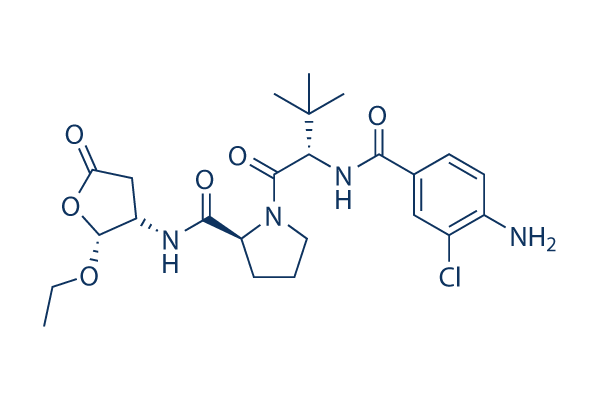Briefly, animals had been anesthetized. The left renal artery was exposed by way of a retroperi toneal flank incision and cautiously isolated from the renal vein, nerves, and connective tissues. Utilizing an ophthal mic surgical microscope, a U shaped stainless steel clip using a 0. 12 mm wide opening was placed around the renal artery close to the abdominal aorta, which decreased renal perfusion. Two weeks after sur gery, animals had been divided into two groups, renovascular hypertensive mice treated with vehicle and hypertensive mice treated with 40 mg kg day in the PDE5 inhibitor sildenafil for 2 weeks by oral gavage. The effect iveness of this sildenafil dose was previously demon strated in research on endothelial dysfunction and DNA damage in our laboratory.
The dose was according to the fact that sildenafil displays decreased oral absorp tion by pre systemic hepatic metabolism and higher wash out in mice. Sham operated mice were employed as handle animals. Hemodynamic measurements Twenty eight days after the 2K1C or sham operations, mice have been anesthetized selleck with a combination of ketamine xylazine, plus a catheter was inserted in to the ideal carotid artery to take mean arterial pressure and heart rate recordings. The absolutely free end in the cath eter was tunneled beneath the back skin to the level of the shoulder blades. Two days just after the catheter placement, hemodynamic measurements had been performed in conscious, freely moving mice in their cages, as currently validated by other individuals and standardized in our laboratory as a enough period for comprehensive recovery from surgery.
For the MAP and HR recordings, the arterial catheter was plugged into a disposable blood pressure transducer connected to a pressure processor amplifier and data acquisition system. At the beginning on the experimental session, a period of around 30 min was permitted for stabilization of cardiovascular inhibitor price parameters just before the measurement of basal MAP and HR values in conscious mice. Biochemical analysis of renal function Mice had been placed in metabolic cages for a 24 hour adap tation period followed by a further 24 hour period for biochemical evaluation of urine. Soon after, animals were eutha nized, and their blood was collected for creatinine and urea measurements employing industrial test kits. Proteinuria was measured in urine sam ples by spectrophotometry just after endpoint reaction with a colorimetric kit.
Measurements of angiotensin II in kidney tissue Renal levels of angiotensin II had been analyzed by HPCL. Briefly,  angiotensin peptides have been extracted in the left kidney sample homogenates and purified in Oasis C18 columns previously activated with methanol, tetrahydrofuran, hexane, methanol and water. Following activation, the samples have been applied to the columns, washed with water and eluted in ethanol acetic acid water in the proportions of 90 four 6.
angiotensin peptides have been extracted in the left kidney sample homogenates and purified in Oasis C18 columns previously activated with methanol, tetrahydrofuran, hexane, methanol and water. Following activation, the samples have been applied to the columns, washed with water and eluted in ethanol acetic acid water in the proportions of 90 four 6.
Dehydrogenase Signal
LDH exists in four distinct enzyme classes.
